What Is Tacit Knowledge and How Can Businesses Access It?

Contents
What Is Tacit Knowledge and How Can Businesses Access It?
How Does Tacit Knowledge Compare to Explicit and Implicit Knowledge?
How to Capture Tacit Knowledge
The Benefits of Capturing and Sharing Tacit Knowledge
Why Businesses Are Turning To Knowledge Sharing Systems
The Future of Knowledge Management Systems
Tacit knowledge is the intelligence we have that is gained through the personal and professional experience you’ve learned both in your current role and previous jobs. It’s the knowledge that’s difficult to explain and challenging to document. In a business context, tacit knowledge falls under the category of intangible assets, which accounts for 84% of all assets in S&P 500 companies1.
Accessing and distributing tacit knowledge is no longer a choice for businesses, it’s essential. This was clear when our CEO, Marc Vontobel, spoke to Dräger’s Florian Volkenand in our webinar on how to ensure customer satisfaction with knowledge management.
Florian shared that one of the major targets behind Dräger’s knowledge management strategy was to improve tacit knowledge sharing. He told us, “We wanted to provide our [employees] with faster and easier access to informal tacit knowledge.”
If you’re wondering whether tacit knowledge is important to your business, let’s take a look at the different types of knowledge your teams hold and how capturing tacit knowledge can help you to boost productivity and increase employee engagement.
How Does Tacit Knowledge Compare to Explicit and Implicit Knowledge?
What is Explicit Knowledge?
Explicit knowledge is accessible and easy to pass along to others. It’s the most basic form of knowledge and is obtained when data is processed, organized and structured. Accessing, storing and distributing explicit knowledge is often a straightforward, simple process. Explicit knowledge within an organization is typically stored in databases or similar document management systems and includes items like research reports, handbooks, process maps, whitepapers and internal documentation2.
What is Implicit Knowledge?
Implicit knowledge is gained by applying explicit knowledge in a practical way. Once someone has learned how to perform a specific task, gathering the explicit knowledge on how to do that task either by referring to documentation or asking a coworker, implicit knowledge creation happens when they perform that task. By transferring explicit knowledge into implicit knowledge, employees can develop new skills and discover the best way to approach different tasks. These skills are transferable from job to job.
What is Tacit Knowledge?
Tacit knowledge encompasses everything a person knows how to do but does not necessarily know how to explain or has taken the time to try to document. It can be defined as skills, ideas and experiences that people have but are not written down and may not be captured easily. With tacit knowledge, people are often unaware of their knowledge or how it can be valuable to others. At times this knowledge is simply not shared as it may not be applicable to their current role. Within an organization, tacit knowledge encompasses the habits and behaviors gained by time and experience.
Why Tacit Knowledge is Important to Your Organization
Today, tacit knowledge is the greatest untapped resource within businesses. It accounts for up to 80% of all knowledge within an organization3 compared to just 67% in 19954. In the workplace, tacit knowledge is applied know-how that is business-specific. It can include the skills needed to close a sales deal or how to navigate customer requirements smoothly. These qualities grow through specific experience within an organization and aren’t always easy to transfer to other team members.
When experienced employees leave, they take their wealth of business-specific knowledge with them. Lost tacit knowledge is why it can cost businesses up to 213% of an experienced employee’s annual salary to replace them5. Retaining undocumented knowledge is essential to building business-continuity and longevity.
"Our research has shown that 75% of employees believe their organization would benefit from accessing more of their expertise."
Examples of Tacit Knowledge
In a business environment, common examples of tacit knowledge include:
- Leadership - Good leaders typically develop the skills and behaviors needed to effectively lead teams through experience, and this can make it difficult for them to share the knowledge they have gained simply by writing it down. Instead, they usually need to pass on their tacit knowledge by coaching others in mentor-style conversations.
- Intuition - Sometimes, it may seem as though a colleague ‘just knows’ how to resolve an issue, while others are still working out what the problem is. This is intuition, and while it may seem to strike at random, it’s actually developed through experience in similar situations. As it can come across as ‘just a feeling’, even to those who have this intuition, it can be difficult to share this knowledge with others.
- Creativity - Some people are more creative, while others are more logical, and it can be difficult for creative people to share the inspiration behind their ideas. While employees can be taught how to brainstorm effectively and encouraged to learn from other teams or businesses that are working creatively, it’s often very hard to teach creativity itself.
How to Capture Tacit Knowledge
Businesses often attempt to tackle the challenge of accessing and utilizing this wealth of knowledge with systems like intranets that can only leverage documented knowledge.
Documented knowledge systems also place the burden of knowledge sharing on experts whose time to take on extra projects is often minimal. Additionally, the limitation of these systems is a recipe for silos. While explicit knowledge is easy to access, tacit knowledge often remains hidden in teams or experts’ minds.
Unlike the other forms of knowledge, you can’t simply send team members a handbook or have them watch a webinar to acquire tacit knowledge. Other efforts to capture and pass on tacit knowledge include mentor programs and individual training sessions.
Although useful forms of knowledge sharing, there’s only so much growth that can be achieved through these methods which are static and do not scale.
Research has clearly shown that these methods fall short: When asked, 61% of knowledge workers in the US and UK said they couldn’t easily find the information they need to do their job effectively. Harnessing tacit knowledge means businesses can easily identify experts, ask questions and get fast answers and access the most relevant and up to date information on a particular topic.
The Benefits of Capturing and Sharing Tacit Knowledge
When you effectively free up the tacit knowledge your employees hold, you can help your teams to:
- Learn from their coworkers’ experiences. Tacit knowledge is typically developed through experience, but by empowering your employees to share tacit knowledge, you can help them to learn from others’ experience. A new sales rep might not know that a particular customer prefers to meet in person when finalizing a sale, for example. If a coworker that’s worked with that customer in the past can share this insight with them, the new rep is far more likely to achieve a successful sale.
- Understand different perspectives. Each of your coworkers will have a slightly different perspective on the world, which is in part informed by the tacit knowledge they hold from the different experiences they have had. By enabling them to share tacit knowledge, you can help your employees to gain a better understanding of the experiences that have shaped their coworkers’ perspectives. This can help your teams to work together more cohesively.
- Benefit from best practices. ‘Best practices’ aren’t developed overnight. It’s usually created through trial and error, with your teams learning from past failures and successes. When you free up the tacit knowledge in your business, you can help to ensure that your teams always leverage previous learnings and follow best practice, even if some members of the team haven’t personally experienced the ‘trial and error’ stages themselves.
Learn how Dräger captures tacit knowledge with Starmind and the positive business impact
Why Businesses Are Turning To Knowledge Sharing Systems
If you want to seize the benefits of tacit knowledge sharing, the recommended approach is to have a system designed to capture, store and transfer tacit knowledge within enterprises that is easy to use and enhances employee engagement.
Not only should it enable them to share their tacit knowledge, but it also gives the needed level of comfort to ask about things they are not familiar with. Implementing an intelligence platform provides employees with access to the knowledge they need to do their jobs effectively.
This kind of platform brings together information that you might currently have spread across a wide array of applications. By leveraging public information within an organization, it should identify expertise and skills and access tacit knowledge in real-time.
The best systems also integrate directly into tools employees already use and draw on available public information from data sources where knowledge is likely to be shared, like public group chats on Teams or Slack. Starmind, the AI platform for employees and skills, makes capturing tacit knowledge an implicit part of your organization. It is important to allow employees to engage with knowledge in various ways, including asking questions that are automatically routed to the right expert, building a skill profile highlighting individual employee skill sets, and an overview of the organization’s skills.
Questions are asked anonymously to not put anyone on the spot and the platform immediately tags experts identified as knowledgeable on that particular topic. With answers ranked to select the most accurate one, gamification to enhance participation and immediate feedback received, knowledge sharing becomes fun and engaging, beyond the immense value it brings to the business.
Knowledge management platforms are especially beneficial to large organizations that have both remote and contingent workers. They act as a central hub of information and promote greater collaboration and communication, no matter where staff members are.
The Future of Knowledge Management Systems
To maintain a long-term competitive edge, businesses must unlock their intangible resources. Research has shown that 75% of employees believe their organization would benefit from accessing more of their expertise. By enabling your workforce to easily acquire tacit knowledge, you can create a productive workforce while transforming your employees’ experience.
AI-powered knowledge management systems can facilitate this by providing fast access to tacit knowledge in real-time for all employees. The key to any successful business is augmenting human intelligence, not replacing it — and today’s intelligence platforms can do just that.
Watch our on-demand webinar with Dräger to find out how capturing tacit knowledge helped them to improve customer satisfaction - and discover how your business could benefit, too.

- https://ipcloseup.com/2019/06/04/21-trillion-in-u-s-intangible-asset-value-is-84-of-sp-500-value-ip-rights-and-reputation-included/
- https://www.palgrave.com/gp/book/9781137301543
- https://bit.ly/3d5plCj
- https://www.wsj.com/articles/accountings-21st-century-challenge-how-to-value-intangible-assets-1458605126
- https://bit.ly/2B7NlYk
Sign up to receive latest stats, insights and events
Speak to an expert talk
We’re always ready to help, with support tailored to your business needs. Schedule a call with one of our team to:
- Learn more about how Starmind can connect knowledge across your business.
- Discover the use cases that best fit your needs.
- See how you can bring all of your company’s knowledge into one central platform.
- Discuss your bespoke pricing package.
Get in touch
My rich text default content

My rich text default content

Left side rich text
Right side rich text
Pillar section rich text


